NIL
Patriots Legend Rob Gronkowski Makes Surprising Career Move
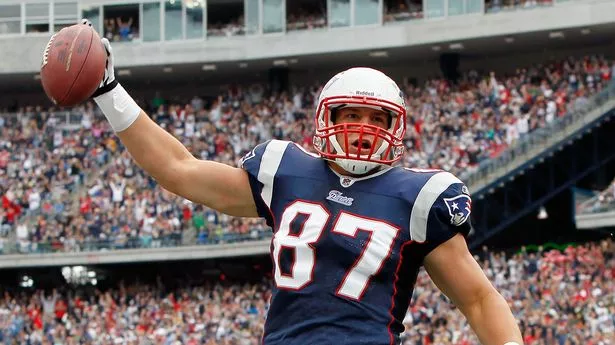


Rob Gronkowski, the legendary tight end for the New England Patriots, is stepping into a new role as the grand marshal at the Indy 500’s Snake Pit music event in 2025. This marks a notable shift from his retirement and departure from professional football, where he won four Super Bowls with the Patriots and one with the Tampa Bay Buccaneers. Following his departure from the NFL, Gronkowski ventured into endorsements and sports commentary, representing brands like T-Mobile and Fox Sports. Now, he’s embracing the world of auto racing in a ceremonial capacity, highlighting his diverse career trajectory post-football. Gronkowski expressed excitement about merging sports with music at this iconic event.
By the Numbers
- Gronkowski won 4 Super Bowls during his NFL career.
- He served as a grand marshal at the 2025 Indy 500 Snake Pit, marking a new chapter in his career.
State of Play
- Gronkowski has transitioned from NFL stardom to endorsements and sports commentary.
- The Snake Pit event has evolved from a chaotic spectator zone to a corporate-sponsored music festival since its revival in 2010.
What’s Next
Anticipation builds for Gronkowski’s debut at the Indy 500 as grand marshal, potentially increasing his visibility in entertainment and expanding his brand beyond sports. The outcome of this role may pave the way for more crossover events between sports and entertainment.
Bottom Line
Gronkowski’s latest career move signals a dynamic shift from traditional sports roles to broader entertainment engagements, emphasizing the versatility of retired athletes in today’s marketplace.
NIL
Nick Saban Calls for the Establishment of a College Football Commissioner
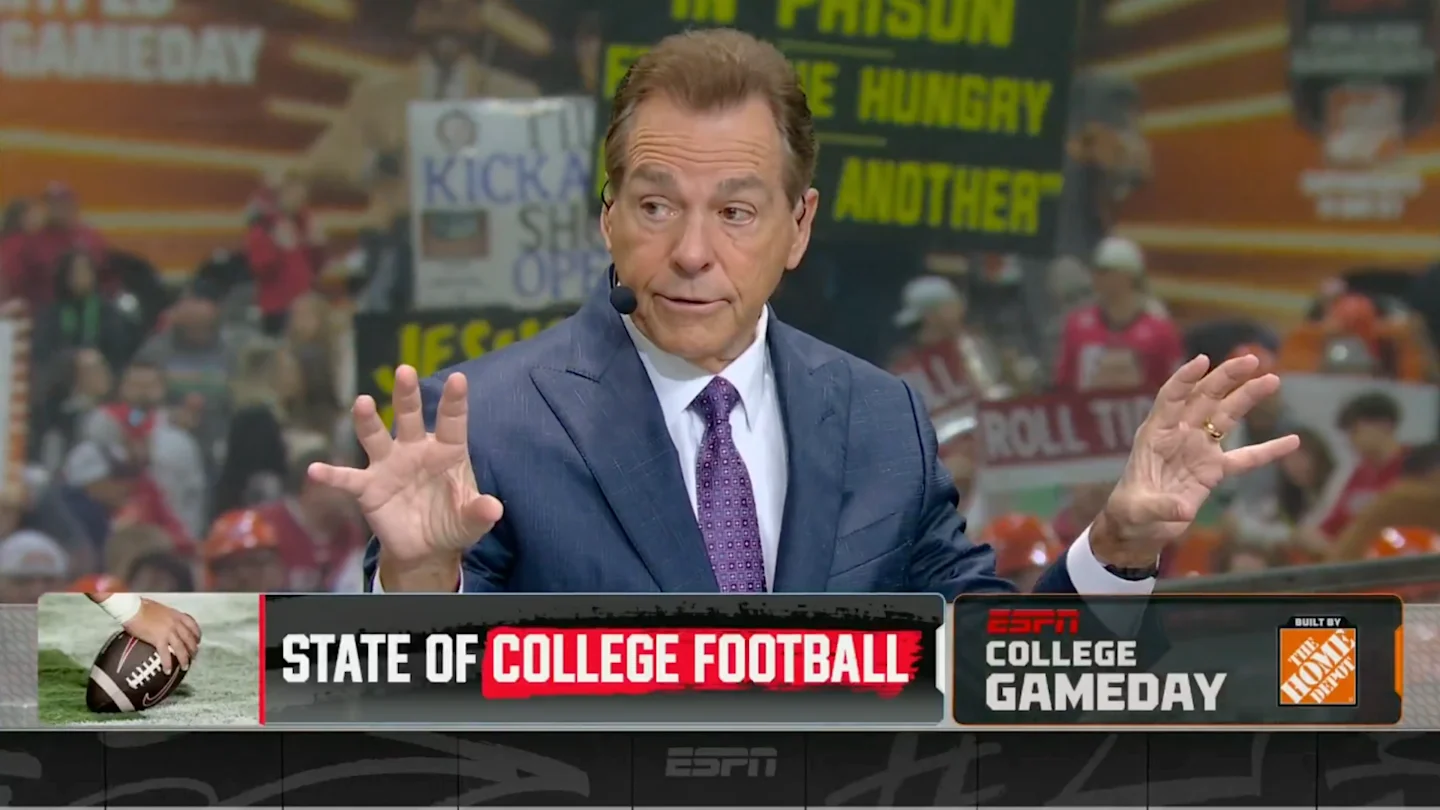
Nick Saban might no longer be the coach of the most dominant program in college football, but his presence still looms large on the sport as a whole. In his new role with ESPN’s College GameDay over the past two years, Saban has branded himself as a voice of reason of sorts in the Wild West era of NIL, the playoffs, and this year, a wild coaching carousel.
On conference championship Saturday, Saban once again pitched that the sport needs some established leadership in a more formal role: a commissioner.
“I think that we need to have a commissioner who’s kind of over all the conferences, as well as a competition committee who sort of defines the rules of how we’re going to play the game. Because that’s what we don’t have right now,” Saban said.
“We used to have contracts, for coaches and for players, that defined what’s your academic responsibilities, when can you transfer, what’s your obligation to the school. We don’t have that now. And if you really don’t support that, you’re kind of supporting a little bit of anarchy, which we have right now. So I think having a commissioner, national commissioner, having a governing body, certainly would enhance [the game]. Because I do think that the College Football Playoff has kind of camouflaged some of these issues, because there’s so much interest in college football because of the playoff.”
Nick Saban wants to see a commissioner for college football ✍️ pic.twitter.com/WtHgBcdHca
— College GameDay (@CollegeGameDay) December 6, 2025
The pitch for a college football commissioner is not exactly a new one, but the value of such a central figure for the sport has been highlighted by an overactive coaching carousel and an extremely tight race for the College Football Playoff.
FREE. SI College Football Newsletter. Get SI’s College Football Newsletter. dark
The college football schedule has come under scrutiny with multiple coaches set to take their team to the playoff but jump ship to a new team next year. Some of those coaches are getting the chance to coach out their run with their current schools, but Lane Kiffin, who left Ole Miss for LSU, is not.
A commissioner, along with in Saban’s pitch a central governing body, could establish a schedule that prevents schools from poaching coaches until the end of the current season. They could also potentially provide more direct guidance to schools as the NIL era continues to take shape before our eyes.
Somewhat ironically, Saban has been floated by many as the perfect man to take on the role of commissioner. Saban doesn’t seem interested, or at least isn’t currently advocating for the gig, but would be a pretty easy choice for any newly established central hub of leadership in the sport.
Penn State head coach James Franklin talks about NIL, the transfer portal, and why Nick Saban should be the commissioner of college football.
“If every decision we make is based on money, then we’re heading in the wrong direction.”
1/2 pic.twitter.com/uSS1QHz1Wh
— Colton Pool (@CPoolReporter) December 29, 2024
That said, one of the reasons a “commissioner” keeps getting floated as a potential solution to the current problems in college football is that the role is undefined enough to sound like it could make a difference.
While it’s easier to think that the issues of the calendar and the coaching carousel and NIL just came up out of the blue and their negative impacts on the sport are the result of a lack of a controlling body, they are actually the result of decisions, made by people who currently have power over said decisions, largely driven by dollars. Unless the hypothetical commissioner was given an inordinate amount of power, those problems won’t just disappear overnight.
That said, some might think that an inordinate amount of power in the hands of one benevolent figure who loves the sport may be preferable to that power being spread across varied hands with even more varied interests. For now, the idea of a commissioner of college football remains an interesting thought experiment, but if Saban wants to start campaigning for the gig, he’d certainly have a strong base of support.
More College Football from Sports Illustrated
Listen to SI’s new college sports podcast, Others Receiving Votes, below or on Apple and Spotify. Watch the show on SI’s YouTube channel.
NIL
Georgia takes Missouri DE Damon Wilson to court for $390,000 in damages after transfer
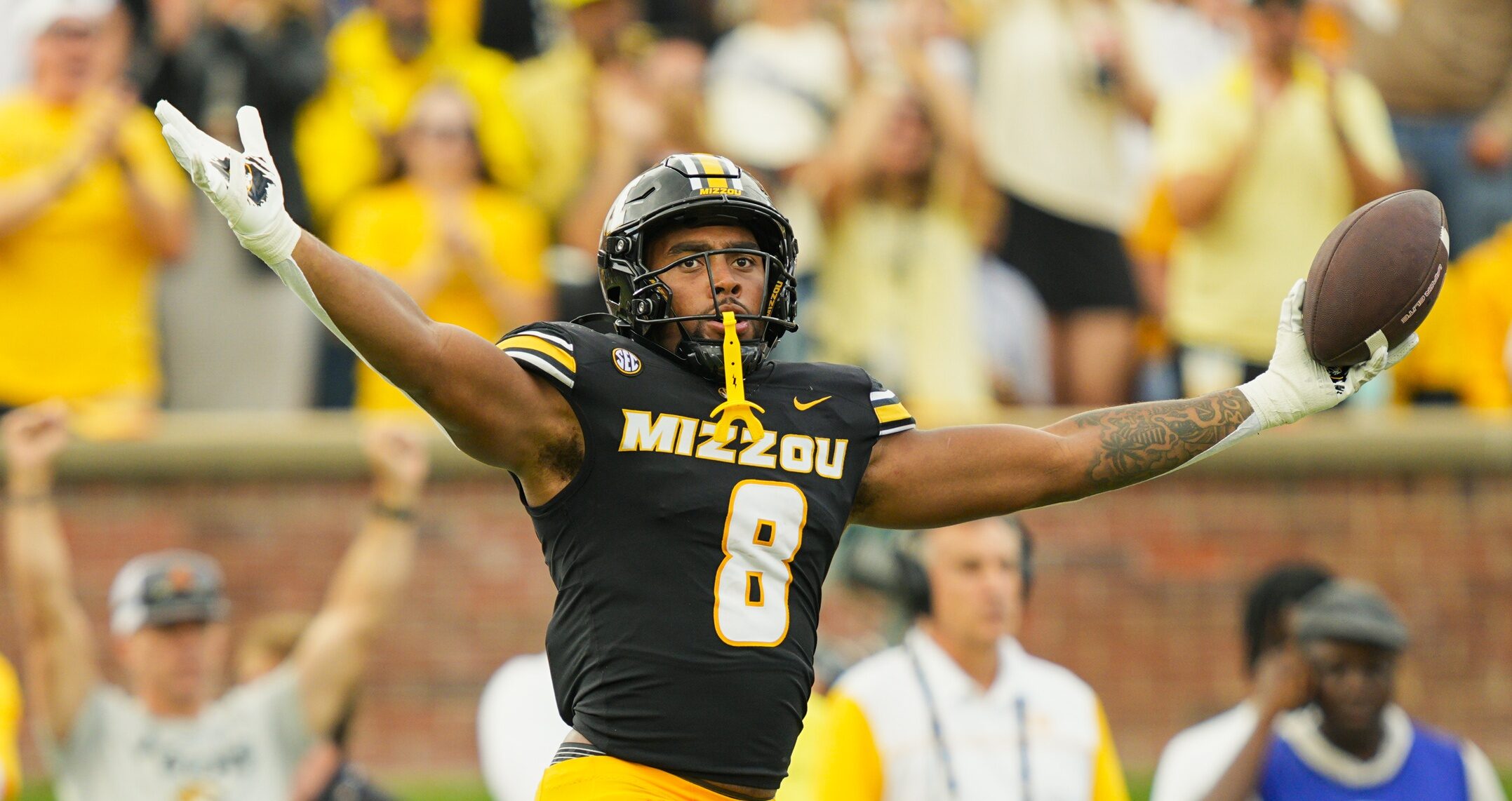
Georgia‘s athletic department is headed to court in a potentially precedent-setting legal effort to recoup approximately $390,000 in damages from former Bulldogs defensive end Damon Wilson, according to ESPN’s Dan Murphy. Wilson is Missouri‘s top pass rusher this season after transferring in from Georgia this past January.
Georgia filed a civil suit Nov. 19 requesting an Athens-Clarke County judge to compel Wilson into arbitration to settle a clause in an agreement he had with the Bulldogs’ team collective that effectively served as a buyout fee for exiting his NIL deal early when he transferred to Mizzou following the conclusion of last season. A copy of the lawsuit was obtained by On3‘s UGASports.com.
SUBSCRIBE to the On3 NIL and Sports Business Newsletter
Wilson played for the Bulldogs in 2023 and 2024, and signed a new NIL agreement with Georgia’s Classic City Collective two weeks prior to entering the NCAA Transfer Portal this past January. Through its collective, Georgia initially paid Wilson a total of $30,000 before his transfer, and now claims Wilson still owes the school a lump sum of $390,000 that was due within 30 days of his decision to leave the team, per ESPN.
The particular clause cited in Wilson’s deal with the Classic City Collective is for “liquidated damages” that many schools and collectives have inserted into their NIL agreements to both protect their investment in players and deter transfers, per ESPN. Georgia is believed to be among the first college athletic departments to publicly try to enforce the “liquidated damages” clause by filing suit against the player.
“When the University of Georgia Athletic Association enters binding agreements with student-athletes, we honor our commitments and expect student-athletes to do the same,” Georgia athletics spokesman Steven Drummond told ESPN in a statement Friday afternoon.
Wilson signed a term sheet with the Classic City Collective in early December 2024, shortly before the Bulldogs’ College Football Playoff quarterfinal loss to Notre Dame. Wilson’s 14-month contract with the collective was worth $500,000 to be distributed in monthly payments of $30,000 with two additional $40,000 bonus payments to be paid out in February and June 2025 once this past year’s transfer portal windows closed for remaining committed to Georgia, according to legal documents obtained by On3.
Wilson’s contract with Georgia’s collective reportedly dictated that should Wilson either withdraw from the team or enter the transfer portal during the term of the deal, he’d owe Classic City Collective a lump sum equal to the remaining money he would’ve received had he stayed with the Bulldogs through the length of the term sheet. The collective’s damages calculation does not include the two bonus payments that weren’t ultimately paid out. The Classic City Collective ultimately signed over the rights to those damages to Georgia’s athletic department on July 1 after most schools took over player payments following the June passing of the House Settlement.
Wilson leads Missouri with nine sacks this year and ranks third on the team with 9.5 tackles for loss and 20 total tackles in his first season in Columbia. Wilson had 3.5 total sacks in two seasons at Georgia.
NIL
Predicting the College Football Playoff after Tulane wins the American title

All that Tulane had to do was take down North Texas to win the American Conference championship, and it was all but assured a place in the College Football Playoff picture.
That they did, coming off a strong defensive performance to all but clinch what should be the highest position among Group of Five teams in the forthcoming CFP rankings as Selection Day draws near.
Coming into Championship Week, there was some newfound confusion around the final two seeds in the latest playoff bracket, with the committee leaving them blank as they await developments in the Group of Five and the ACC Championship Game.
With still plenty of football yet to be played this weekend, here is our latest projection for what the playoff field will look like after Tulane won the American title.
Predicting the College Football Playoff field after Tulane’s win

1. Ohio State. Our current projection is that the Buckeyes are able to stay undefeated and pass the test against perfect Indiana to win the Big Ten championship on the back of the top-ranked defense in college football and secure the No. 1 seed.
2. Georgia. Kirby Smart may be 1-7 against Alabama, but his defense could have a decisive advantage against a Crimson Tide offense that doesn’t look like its dominant self to win the SEC championship for a second-straight season.
3. Texas Tech. Arguably college football’s best defense, and inarguably the best in school history, should still have an edge against a BYU team it beat by 22 points a couple weeks ago, this time to win the Big 12 championship.
4. Indiana. The projected loss we foresee against the Buckeyes should be very close, within the narrow point spread, enough to stay tucked inside the top four for a team that has looked unstoppable and leads the nation in scoring margin this season.
5. Oregon. The one-loss Ducks should stay in the top-five, but behind the Indiana team that gave them that loss, by 10 points at Eugene earlier this season.
6. Ole Miss. Lane Kiffin’s departure for LSU didn’t hurt the Rebels’ position in the rankings, and they should stay in the picture to host a first-round game.
7. Texas A&M. No shot at the SEC championship after that loss against rival Texas, but the Aggies have done enough to warrant hosting a first-round game.
8. Oklahoma. The Sooners, especially their smothering defense, made a statement in the latter half of the season to move into the right side of the playoff bracket.
9. Notre Dame. A loss by Alabama should enable the Irish to move up one spot, even if arguments still persist, and credibly so, that Miami might deserve it more given its head to head win over the Golden Domers and their comparable resumes.
10. Alabama. Despite there being other teams on the bubble that could have an argument — namely BYU, Miami, Texas, and Vanderbilt — the selectors will prefer the loser of the SEC Championship Game over them, provided it’s close to make that decision easier.
11. Virginia. James Madison fans are cheering for Duke to beat Virginia for the ACC championship, but that’s not a result we expect, allowing the Cavaliers to sneak in at the bottom of the field. If Duke does it, Tulane moves to 11 and James Madison to 12.
12. Tulane. An inspired defense and some help from a hapless North Texas offense allowed the Green Wave to win the American Conference championship to secure the highest position in the rankings by any Group of Five team.
What the College Football Playoff bracket could look like

First Round Games
12 Tulane at 5 Oregon
Winner plays 4 Indiana
11 Virginia at 6 Ole Miss
Winner plays 3 Texas Tech
10 Alabama at 7 Texas A&M
Winner plays 2 Georgia
9 Notre Dame at 8 Oklahoma
Winner plays 1 Ohio State
Read more from College Football HQ
NIL
Ty Simpson vs Gunner Stockton: Stats, NIL, Head-to-Head Comparison Ahead of 2025 SEC Championship
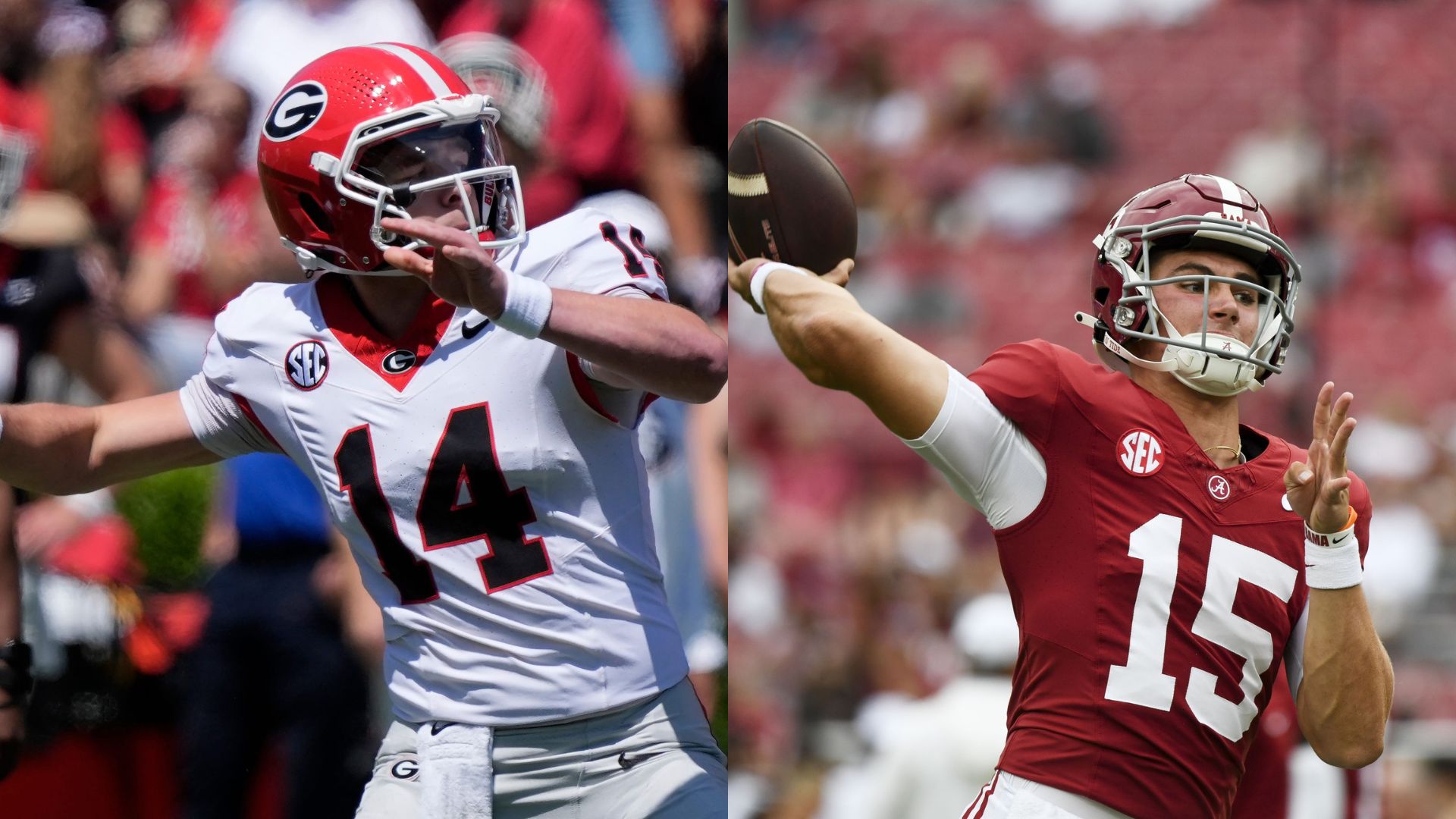
The 2025 SEC Championship will feature a showdown between two elite quarterbacks: Alabama Crimson Tide’s Ty Simpson vs Georgia Bulldogs’ Alabama Crimson Tide. Both have led their respective programs to this stage with elite play on the field, as evidenced by offensive numbers topping the SEC charts.
Let’s compare them on several fronts before the highly anticipated SEC showdown:

Ty Simpson vs Gunner Stockton: Stats
Both quarterbacks have one thing in common. They both had to patiently wait for their time before getting the opportunity to lead the team right from the start of the season. Simpson used to back up Jalen Milroe, while Gunner Stockton had to play behind Carson Beck.
| Player | Passing Yards | Passing TDs | INTs | Completion % (2025) | QBR (2025) |
| Ty Simpson | 3,056 | 25 | 4 | 65.8% (256-389) | 79.5 |
| Gunner Stockton | 2,535 | 20 | 5 | 70.2% (231-329) | 86.0 |
In terms of rushing, Simpson has rushed for 126 yards on 75 carries, including two touchdowns. On the other hand, Stockton seems a better rusher, as he has rushed for 403 yards on 103 carries, including eight touchdowns.
Ty Simpson vs Gunner Stockton: Head-to-Head Comparison
There is only one match where both quarterbacks dueled it out. It happened in the 2025 regular season, in which Simpson’s Alabama defeated Stockton’s Georgia 24-21. In that game, Stockton completed 13 of 20 passes for one touchdown. He also rushed for 22 yards on five carries. On the other hand, Simpson completed 24 of 38 passes for 276 yards and two touchdowns. He also rushed for 12 yards on four carries, including one score.
Ty Simpson vs Gunner Stockton: NIL deals
Alabama’s Ty Simpson recently signed a high-profile NIL deal with Gatorade for 2025. He already has a diverse NIL portfolio, including deals with Hugo Boss, EA Sports, Raising Cane’s, Hollister, Panini and Topps. He is represented by “QB Reps.” According to On3, his NIL valuation is around $948,000.
Meanwhile, Georgia’s Gunner Stockton has signed NIL deals with CAVA, HEYDUDE footwear, Athens Area Humane Society, Associated Credit Union (ACU), and The Dairy Alliance (part of their “Milk’s Got Game” campaign). According to On3, his NIL valuation is around $524,000.
Read More News:
Fans Push Nick Saban As ‘Man for the Job’ As Ex Alabama HC Makes Bold CFB Commissioner Proposal
Netflix’s ‘Any Given Saturday’ Reveals Brian Kelly’s Behind-the-Scenes Pitch to Keep Garrett Nussmeier at LSU
$1.1M NIL-Valued Star Claps Back at HC Brian Kelly’s “Death Valley Jr.” Jab Ahead of Clemson vs LSU College Football Showdown
College Sports Network has you covered with the latest news, analysis, insights, and trending stories in college football, men’s college basketball, women’s college basketball, and college baseball!
NIL
Champion of Westwood Again Supporting UCLA Football NIL Efforts
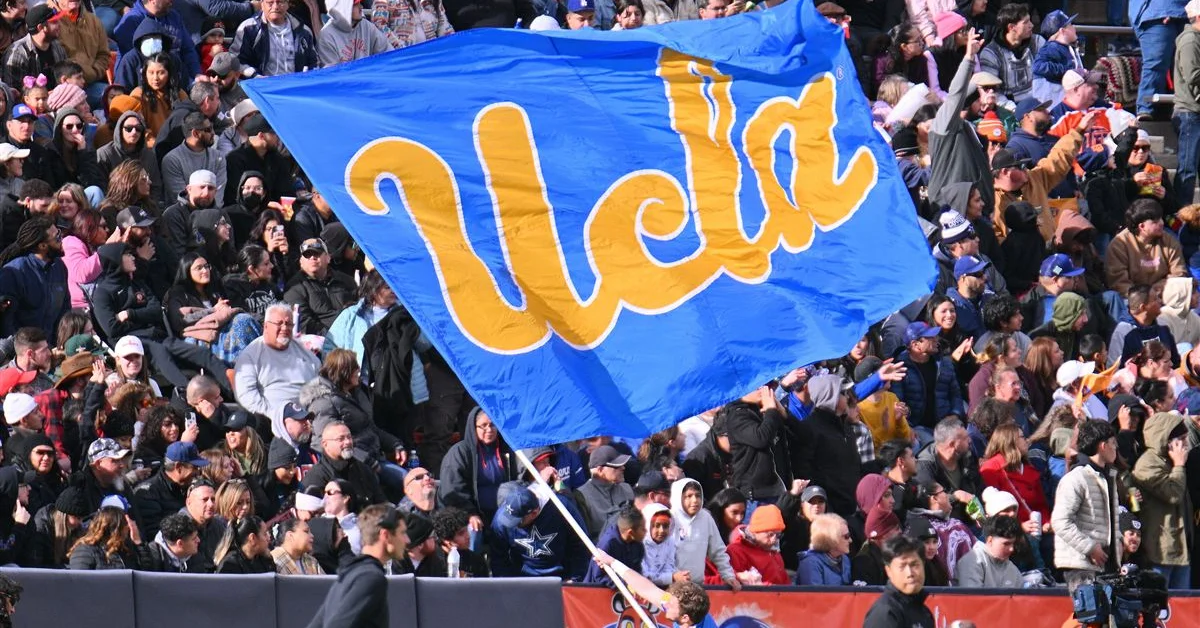
UPDATE ON THE MATCHING CAMPAIGN (DETAILS BELOW): As of 10:02 a.m., total giving is at $38,755 from a total of 78 individuals, for an average of $496. 38% of the way to $100k by the press conference on Tuesday!
Champion of Westwood, a third-party media and branding agency run by Ken Graiwer that has helped UCLA baseball, softball, women’s basketball, men’s basketball (through subsidiary Men of Westwood), and more field competitive teams, is announcing today that it’s back in the UCLA football business.
“It’s an exciting time for UCLA football,” Graiwer told Bruin Report Online. “We are thrilled to once again partner with UCLA football student-athletes to find lucrative opportunities to use their name, image, and likeness, and help ensure that UCLA football can remain competitive in the world of collegiate roster building.”
Bruins for Life, which had been supporting UCLA’s NIL efforts in football, is transitioning to a third-party alumni group and mentorship program.
This announcement comes as UCLA ushers in a new era, with James Madison head coach Bob Chesney taking over as the UCLA head football coach. Attacking the Transfer Portal which opens in January will be one of Chesney’s first priorities, and to do so effectively, the program and its partners will need to have the funds to do so.
To jumpstart the Chesney era and UCLA’s NIL efforts, Champion of Westwood and BRO have partnered on a giving campaign, with a generous donor agreeing to match payments from BRO subscribers up to $200,000 — and there’s more. If BRO subscribers give at least $100,000 by the press conference introducing Chesney on Tuesday, December 9, the donor will match up to another $50,000. So, BRO subscribers have the opportunity to help contribute *half a million dollars* to UCLA’s NIL efforts in football.
As a further enticement, the first four people who give gifts of $25,000 or more will earn an exclusive opportunity for an all-expenses paid trip on a private jet with notable UCLA football alumni to an away game this coming season. The only condition is that the $25,000 must be given in full — it cannot be split up over a payment plan.
To give to Champion of Westwood, please use the form or link below.
If the form above does not work on your device, go here: Give to Football NIL Efforts
NIL
National title contender lands college football’s No. 1 WR recruit
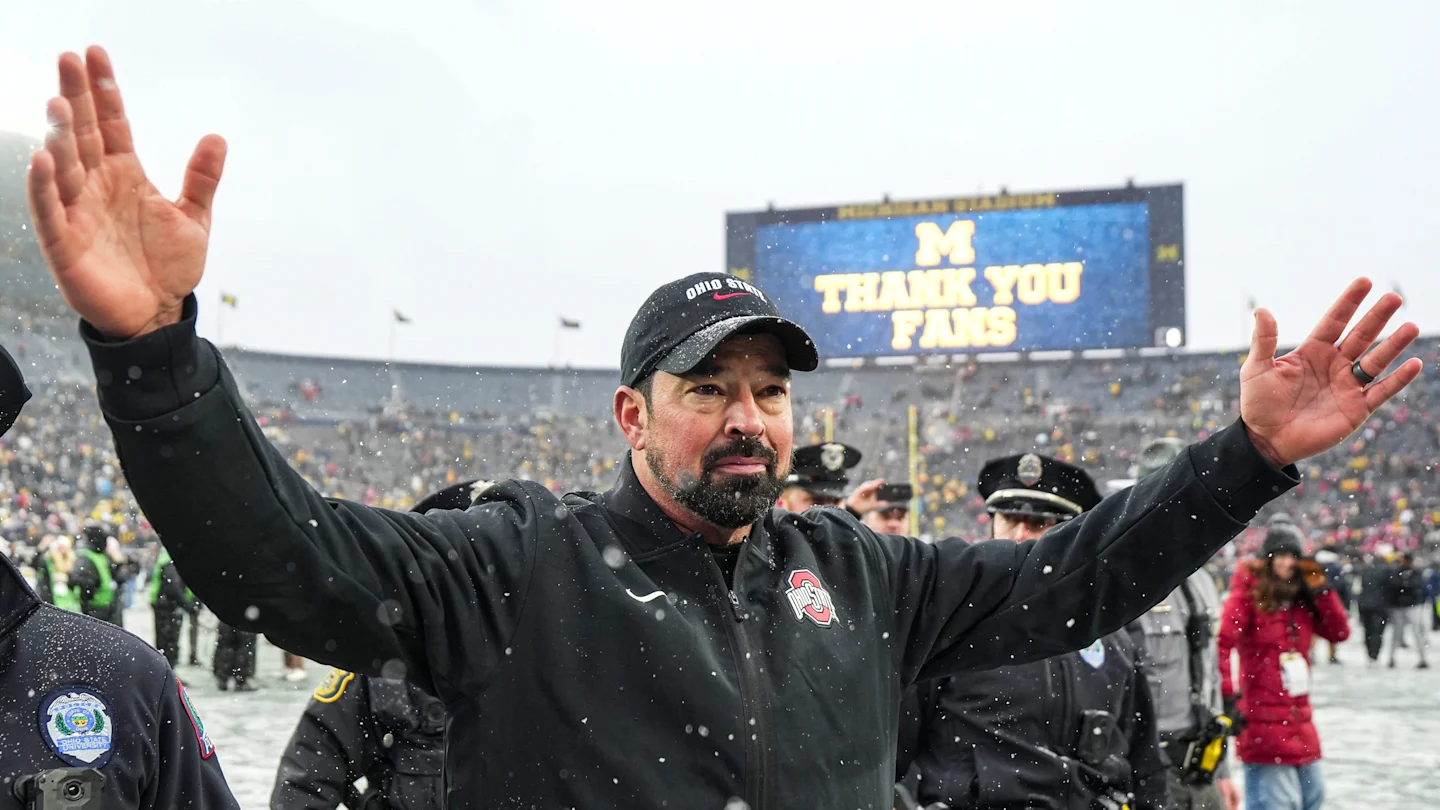
Chris Henry Jr. began his high-school career in Ohio, producing 29 catches for 292 yards and five TDs as a freshman, then transferred to Withrow (Cincinnati), where he exploded for 71 catches, 1,127 yards and 10 TDs in one season before moving west to Mater Dei (Santa Ana, California).
He publicly committed to Ohio State on July 28, 2023, and at times had his recruitment closed or off-limits.
As the No. 1 overall wide receiver at ESPN, Rivals, and 247Sports, he was treated as a major haul for the Buckeyes’ 2026 class.
However, on National Signing Day, Henry did not submit a National Letter of Intent to Ohio State as anticipated.
Multiple outlets tied the pause to Ohio State’s staff turnover, most notably the departure of lead receiver recruiter Brian Hartline.
Henry noted on social media that he “has not signed yet” and wanted to weigh his options after the coaching changes.
On Friday, he announced his official decision on “The Pat McAfee Show.”
Henry told McAfee he will officially sign with Ohio State, providing a massive boost to coach Ryan Day’s Buckeyes.
Ohio State closed the 2025 campaign as one of the country’s top programs yet again, ending the regular season at 12-0 and in line to secure another Big Ten championship.
With 942 yards and 11 touchdowns, Jeremiah Smith, alongside Carnell Tate’s 793 yards and eight scores, led the elite receiving corps that Ohio State is known for.
Coach Ryan Day has built sustained elite performance and recruiting momentum since taking over in 2018, producing an 82-10 overall record, two national championship appearances, and a national title in 2024.

Ohio State’s recent track record of developing NFL receivers — names like Marvin Harrison Jr., Garrett Wilson, Chris Olave, Jaxon Smith-Njigba, and Terry McLaurin — gives Henry a proven pathway from the Horseshoe to pro-ready production.
Henry’s commitment provides an immediate impact on Ohio State’s 2026 class ranking and adds an elite red-zone/vertical threat for an offense that will also feature Smith.
Amid the coaching churn, programs have rushed to sell stability and opportunity, and Day appears ahead of the pack.
Read More at College Football HQ
- Lane Kiffin takes aim at Paul Finebaum amid criticism over LSU decision
- $87 million head coach shuts down interest in other college football jobs
- Manning Award finalists revealed: Who is the nation’s top quarterback?
- ESPN ‘College GameDay’ makes Lane Kiffin announcement before SEC championship game
-

 Rec Sports2 weeks ago
Rec Sports2 weeks agoFirst Tee Winter Registration is open
-

 Rec Sports1 week ago
Rec Sports1 week agoFargo girl, 13, dies after collapsing during school basketball game – Grand Forks Herald
-

 Motorsports2 weeks ago
Motorsports2 weeks agoCPG Brands Like Allegra Are Betting on F1 for the First Time
-

 Sports2 weeks ago
Sports2 weeks agoVolleyball Recaps – November 18
-

 Motorsports2 weeks ago
Motorsports2 weeks agoF1 Las Vegas: Verstappen win, Norris and Piastri DQ tighten 2025 title fight
-

 Sports2 weeks ago
Sports2 weeks agoTwo Pro Volleyball Leagues Serve Up Plans for Minnesota Teams
-

 Sports2 weeks ago
Sports2 weeks agoSycamores unveil 2026 track and field schedule
-

 Sports2 weeks ago
Sports2 weeks agoUtah State Announces 2025-26 Indoor Track & Field Schedule
-

 Motorsports1 week ago
Motorsports1 week agoRedemption Means First Pro Stock World Championship for Dallas Glenn
-

 NIL6 days ago
NIL6 days agoBowl Projections: ESPN predicts 12-team College Football Playoff bracket, full bowl slate after Week 14




















































